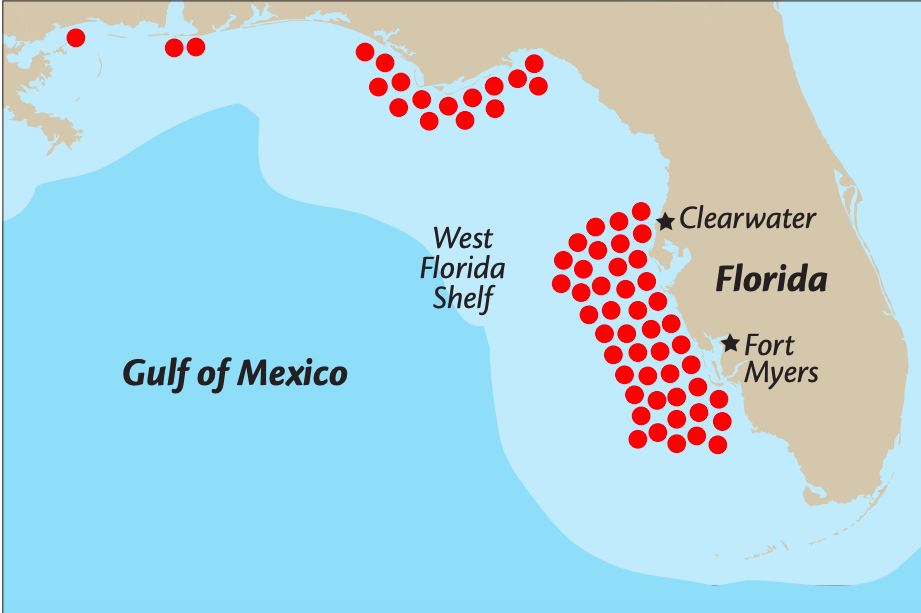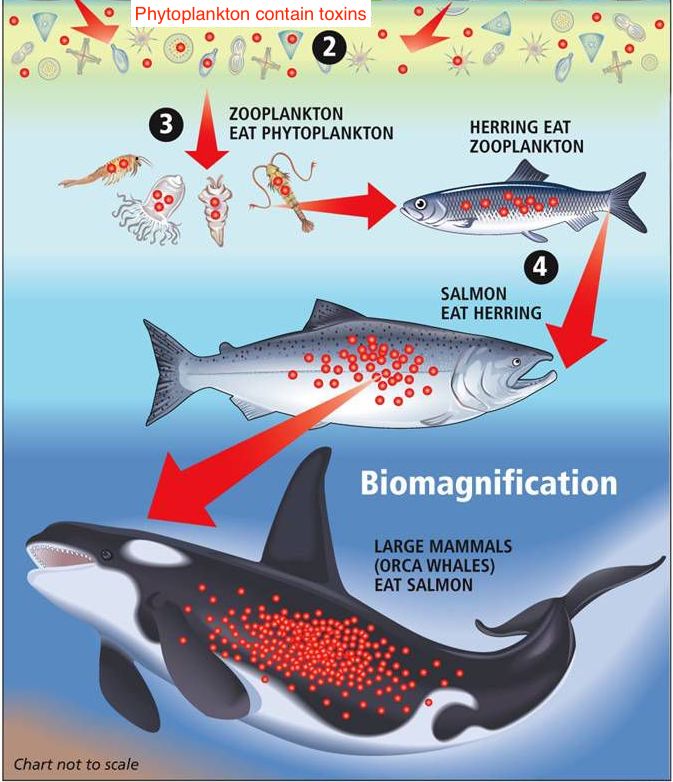Red tides are harmful algae blooms that have significant economic and ecological impacts to Florida ecosystems: especially as they increase in severity and frequency due to anthropogenic causes. However, there are solutions that may be able to mitigate this issue.
When people think of Florida they may think of palm trees or Disney World. A red-coloured ocean is not usually what comes to mind.
However, many Florida inhabitants have become very familiar with ‘red tides’, since they have become quite common over the past few decades. 2018 was an especially bad year, and red tide has recently returned again, as of November 2019.
But what exactly are red tides?
Red tides are a particular type of algae bloom, which is the rapid accumulation a huge mass of single-celled algae in the ocean or in a lake.

Image Source: Ben Depp, National Geographic
The west coast of Florida naturally has conditions that support red tides, however scientists believe that human activities have increased the prevalence of red tides. The reasoning behind this is twofold: first, increased fertilizer run-off into the oceans from farming has drastically increased the nutrient levels in the ocean, allowing the fast-growing algae to multiply out of control. Next, rises in sea surface temperatures due to climate change have amplified the growth rates of the algae that cause red tides.

Location of Red Tides. Image Source: https://myfwc.com/media/16370/2013-ecphab-brochure_red-tides-on-the-west-florida-shelf.pdf
Why Red Tides are Harmful: Ecological Impacts
One reason that red tides are damaging is something called bio-accumulation. Basically: animals higher up on the food chain (such as fish, dolphins, sea turtles and manatees) have the potential to be most impacted.

Infographic Source: Adapted from the Catalina Island Marine Institute (specific species affected by red tide in Florida are different than the ones depicted in this graphic, however the general idea is the same)
As well, after algae blooms, ‘dead zones’ can occur. The large mass of dead algae gets eaten by bacteria, and this process consumes large amounts of oxygen, thus depleting the water of oxygen that other marine species need to survive.
Detrimental Economic Impacts
I, for one, have vacationed with my family to Florida many times and enjoyed the beautiful beaches. But, due to the increasing prevalence of red tides, many Florida beaches must be closed due to dangerous toxins in the air and water. Since Florida’s economy is driven by tourism, bringing in 67 billion dollars annually, beach closures dramatically affect Florida’s economy. Over 40% of US visitors “reported beach and waterfront activities as one of their top activities when visiting Florida”.
As well, many people in Florida rely on fisheries for jobs. Red tides cause massive fish die-offs. So, fisheries are forced to temporarily relocate, if not shut down completely, which has huge economic costs.
/cdn.vox-cdn.com/uploads/chorus_image/image/61079219/GettyImages_1009122882.0.jpg)
Image Source: Joe Raedle, Getty Images
Potential Solutions
While the issue may seem pretty bleak, there are some things that we can do to decrease the severity of red tides. One solution is to restore mangrove forests along Florida coastlines, since they act as a buffer zone that decreases the amount of nutrient-rich run-off that enters the ocean.
Another solution is to treat ocean water with ozone to kill the algae responsible for red tide. However, this option is expensive and labor intensive; and since ozone kills all microbial life it may imbalance the ocean in ways that we cannot anticipate. Meanwhile, mangrove forests are much lower maintenance, and they also provide habitat for coastal species and have been shown to sequester large amounts of carbon. Therefore, I believe that restoring mangrove forests is currently a more viable solution.
As well, it is critically important for scientists to continue to monitor and forecast red tides so that we can anticipate and potentially mitigate future red tides. It is crucial that scientists communicate this information clearly and effectively to relevant groups of people.
Sources:
Doyle, L. (2018, August 5). “Red Tide outbreak: What is Red Tide? Why is it affecting beaches in Florida?” Express. Retrieved from: https://www.express.co.uk/news/world/1027592/red-tide-outbreak-florida-beaches-what-is-red-tide
Garrett, M., Heil, C. & O’Neil, J. (2013). Red Tides on the West Florida Shelf: Science and Management. Retrieved from: https://myfwc.com/media/16369/2013-ecohab-newsletter_red-tides-of-the-west-florida-shelf_science-and-management.pdf
Hall, D. (2018, August). “What Exactly is a Red Tide?” Smithsonian: Oceans. Retrieved from: https://ocean.si.edu/ocean-life/plants-algae/what-exactly-red-tide
O’Neil, J.M. and Heil, C.A. (2013). “SUPPLEMENT: Harmful Algae–Nutrient Dynamics of Karenia brevis red tide blooms in the Eastern Gulf of Mexico”. Florida Fish and Wildlife Conservation Commission. Retrieved from: https://myfwc.com/media/16370/2013-ecphab-brochure_red-tides-on-the-west-florida-shelf.pdf
Pittman, C. (September 26, 2018). “Mote Marine’s ozone experiment works, sort of, but it’s not the silver bullet to kill Red Tide” Tampa Bay Times. Retrieved from: https://www.tampabay.com/news/environment/Mote-Marine-s-ozone-experiment-works-sort-of-but-it-s-not-the-silver-bullet-to-kill-Red-Tide_172136313/
National Ocean Service: “What is a “mangrove” forest?” Retrieved from: https://oceanservice.noaa.gov/facts/mangroves.html
Resnick, B. (October, 2018). “Why Florida’s red tide is killing fish, manatees, and turtles.” Vox Media. Retrieved from: https://www.vox.com/energy-and-environment/2018/8/30/17795892/red-tide-2018-florida-gulf-sarasota-sanibel-okeechobee
Walton, J (May, 2019). Florida’s Economy: The 6 Industries Driving GDP Growth Retrieved from: https://www.investopedia.com/articles/investing/011316/floridas-economy-6-industries-driving-gdp-growth.asp
Waters, H. (January 2017). “Bringing Back Tampa Bay’s Seagrass” Smithsonian: Oceans. Retrieved from: https://ocean.si.edu/ocean-life/plants-algae/bringing-back-tampa-bays-seagrass
Wei-Haas, M. (2018, August 8). “Red Tide Is Devastating Florida’s Sea Life. Are Humans to Blame?” National Geographic. Retrieved from: https://www.nationalgeographic.com/environment/2018/08/news-longest-red-tide-wildlife-deaths-marine-life-toxins/
Wexler, C. (2019, November 18). “Red tide returns in Florida leaving businesses worried about another economic hit.” NBC News. Retrieved from: https://www.nbcnews.com/science/environment/red-tide-returns-florida-leaving-businesses-worried-about-another-economic-n1085131